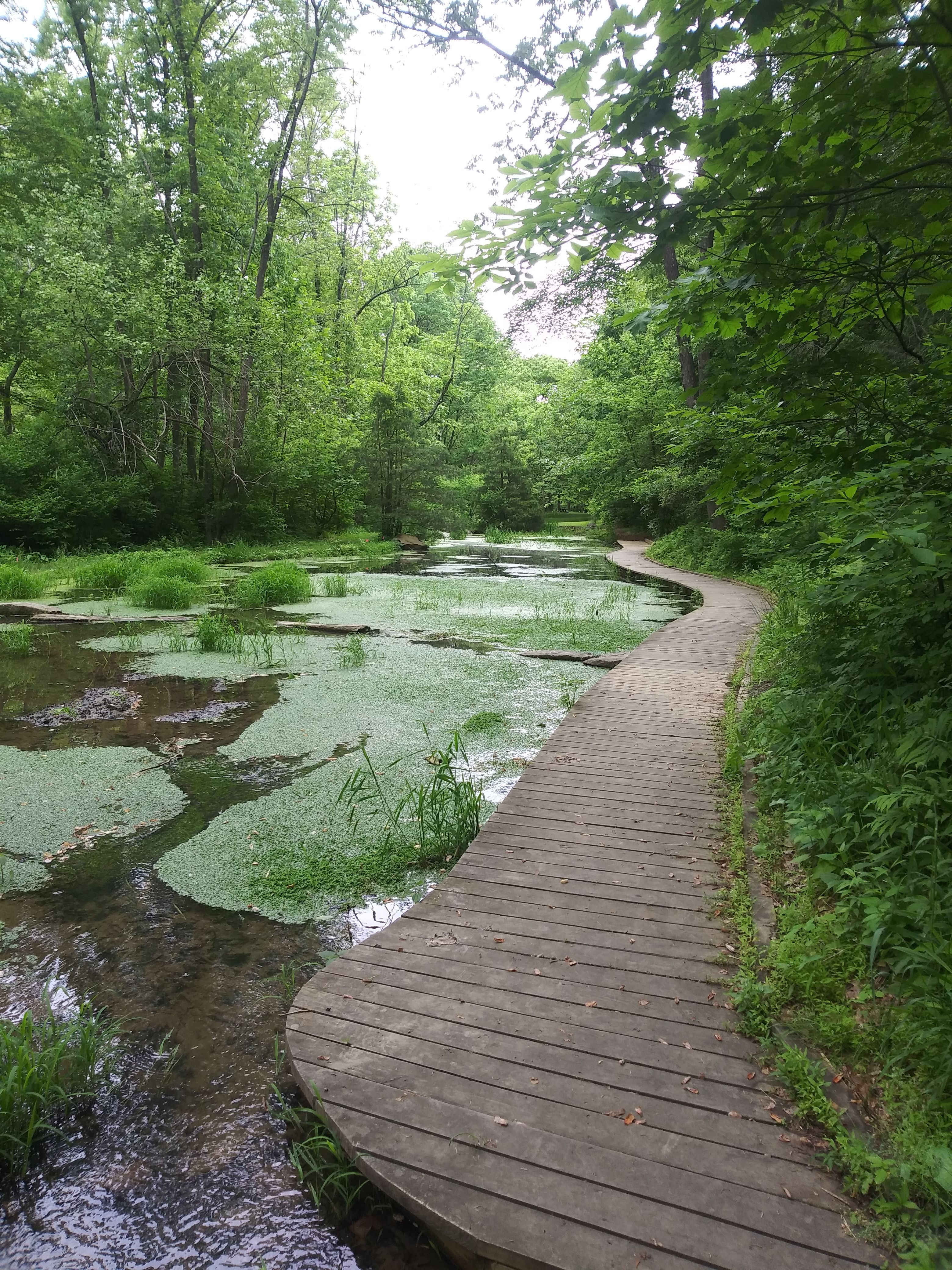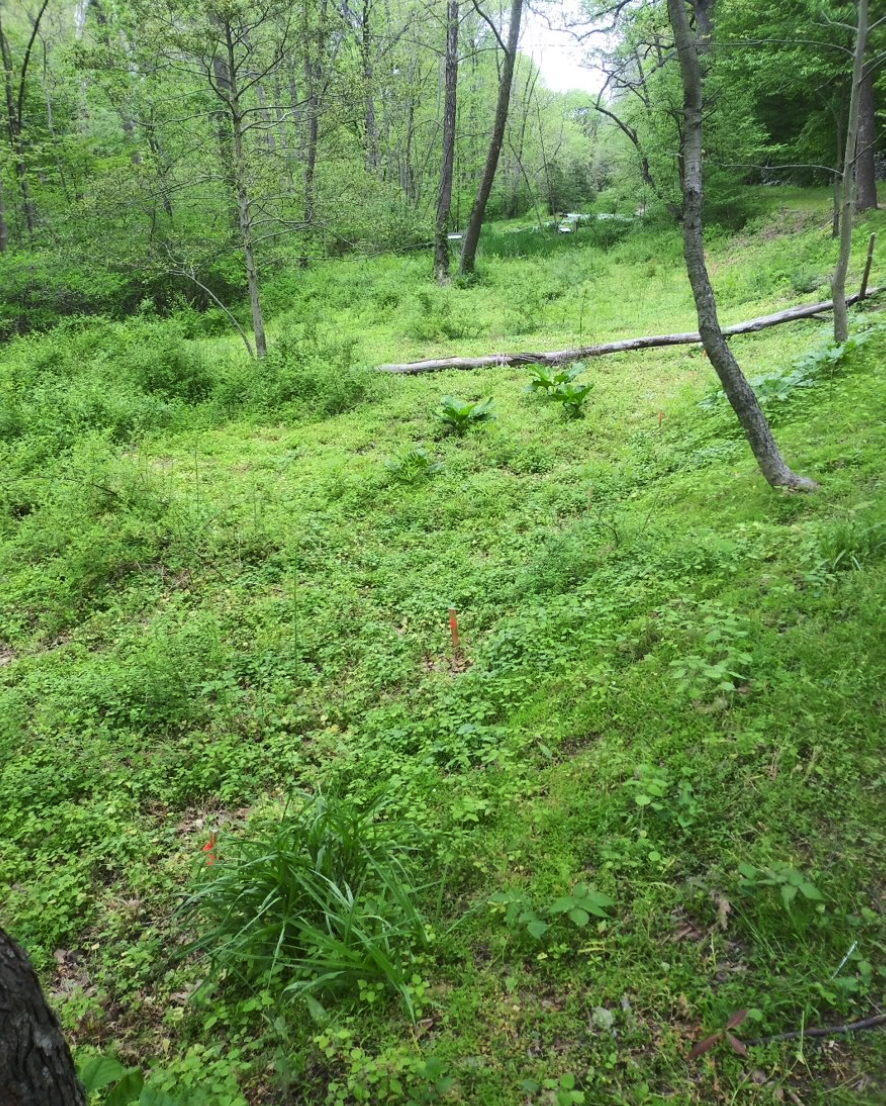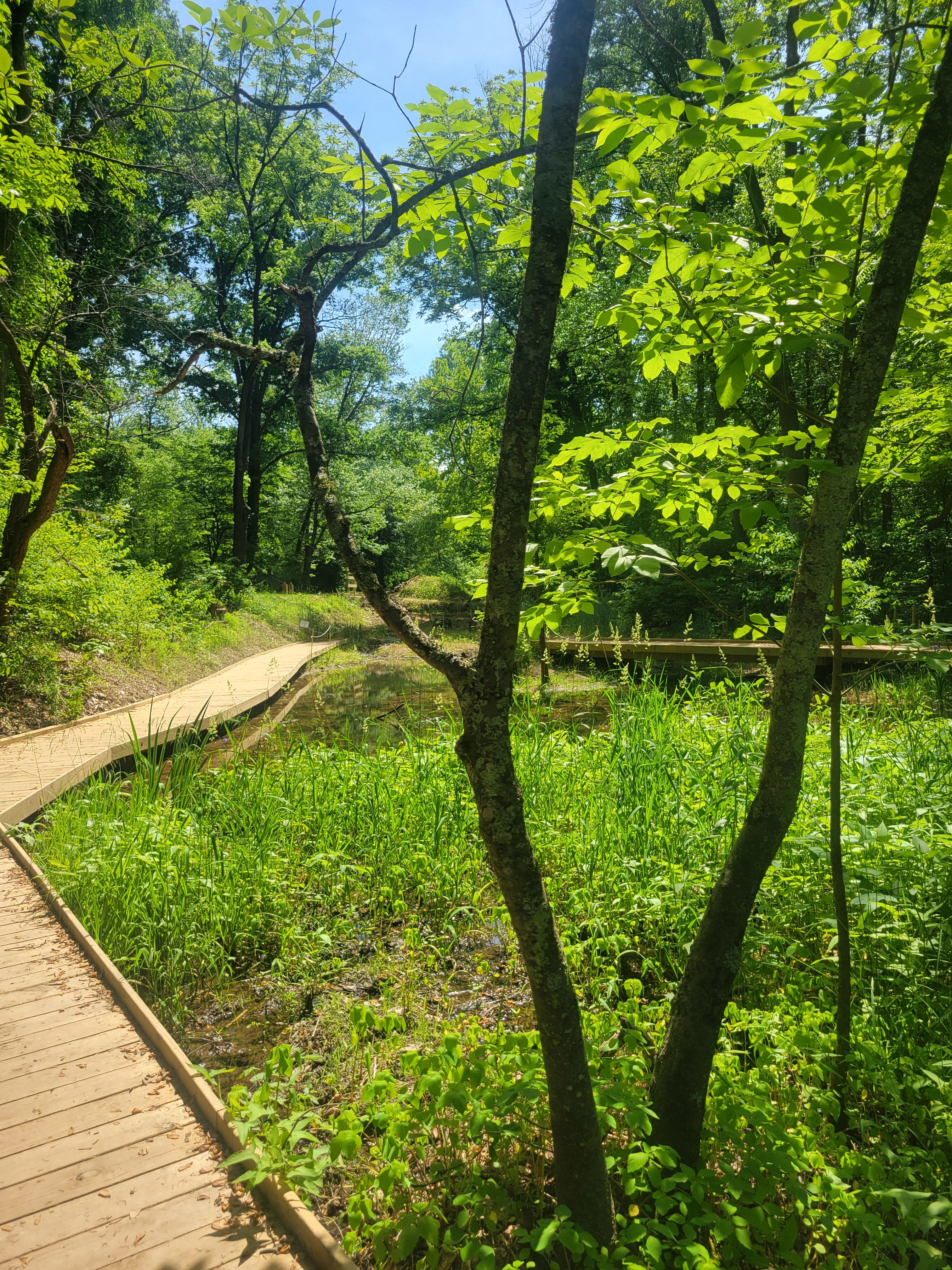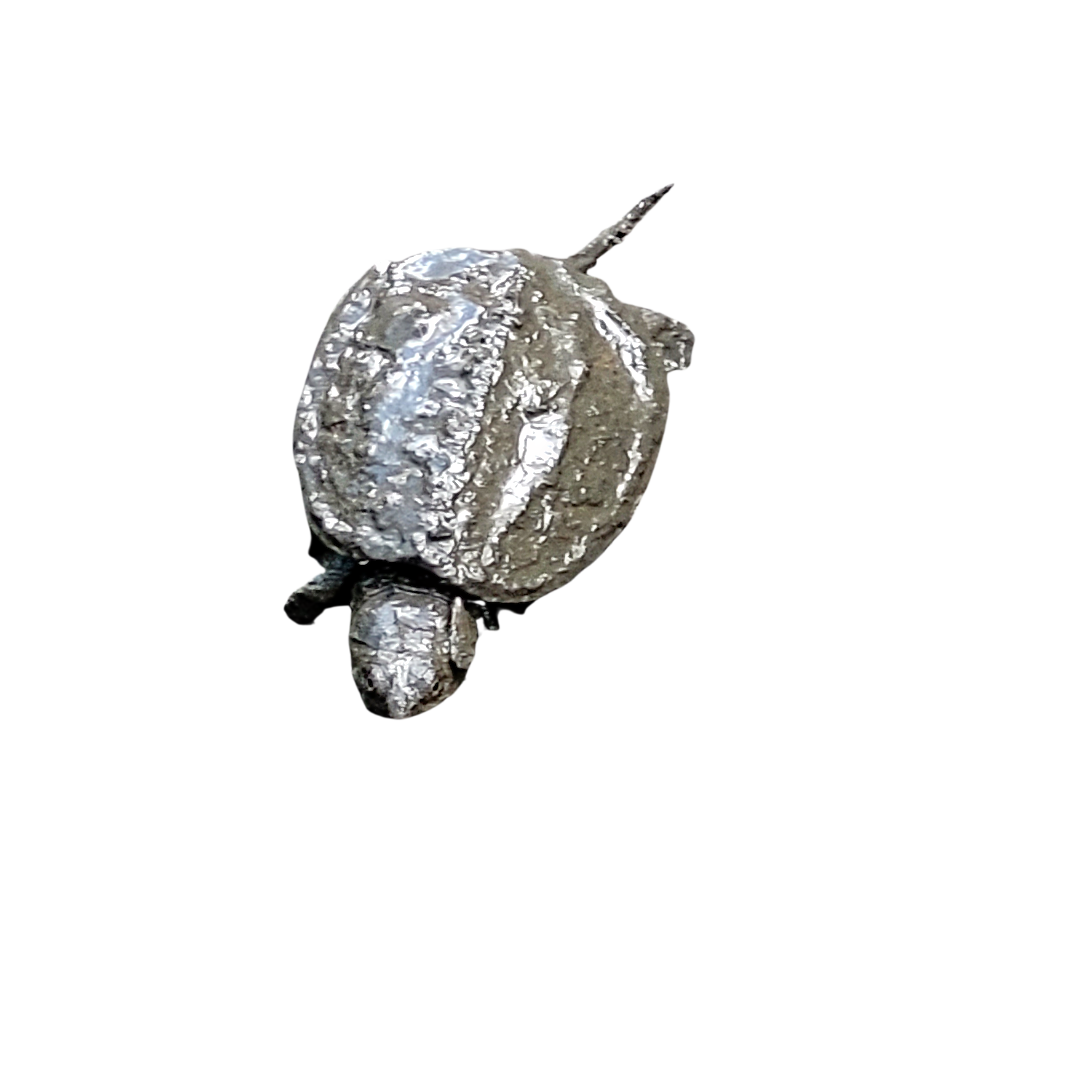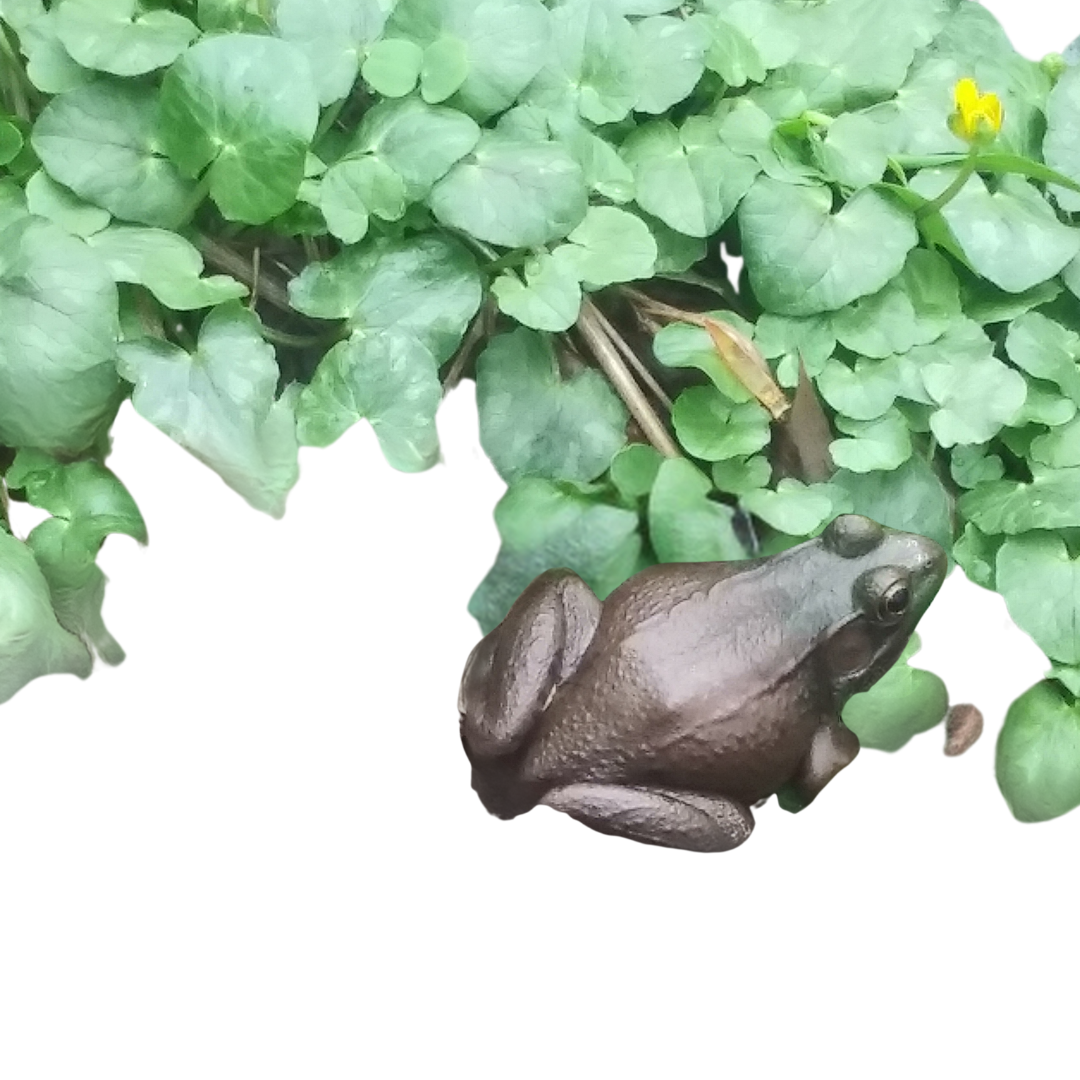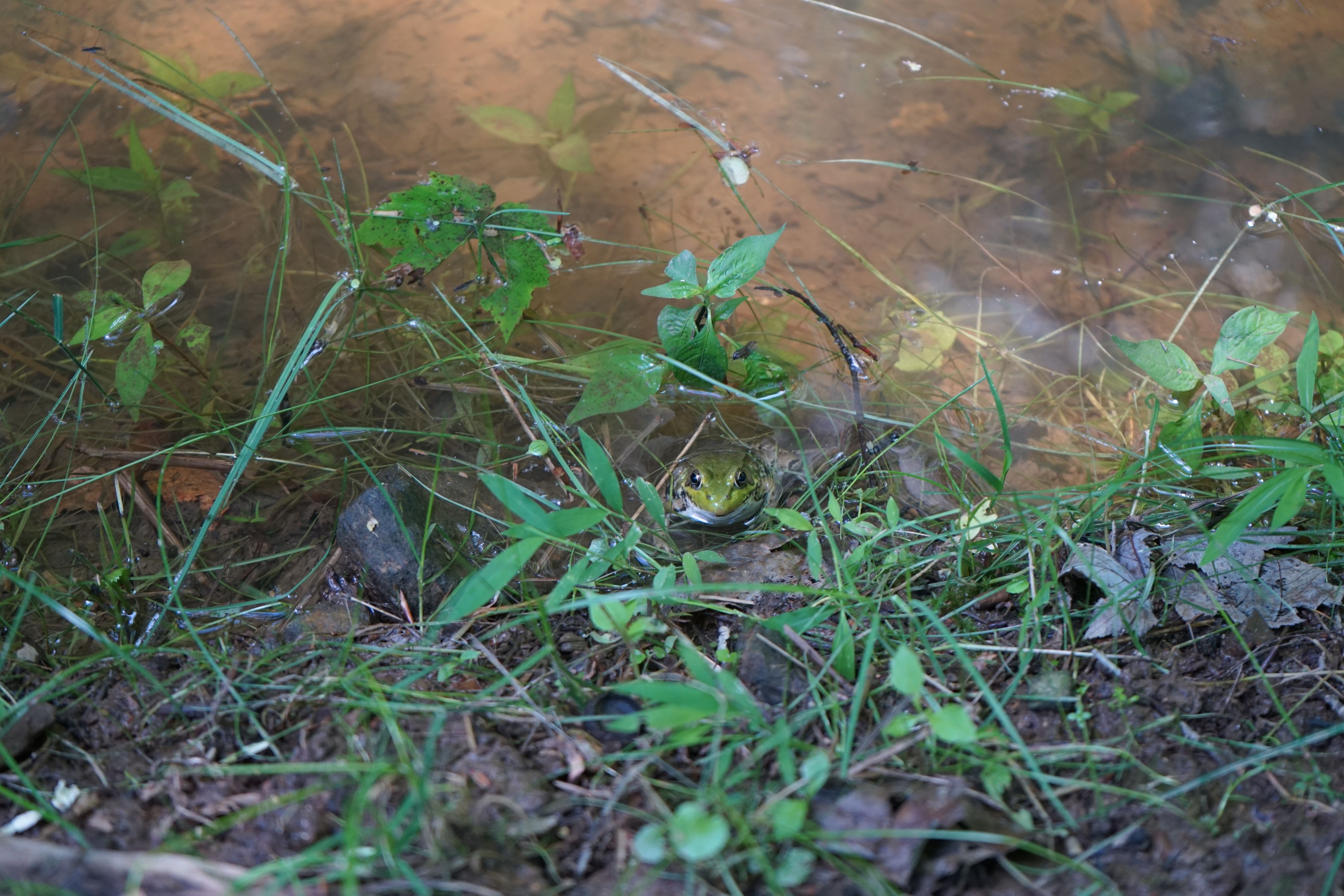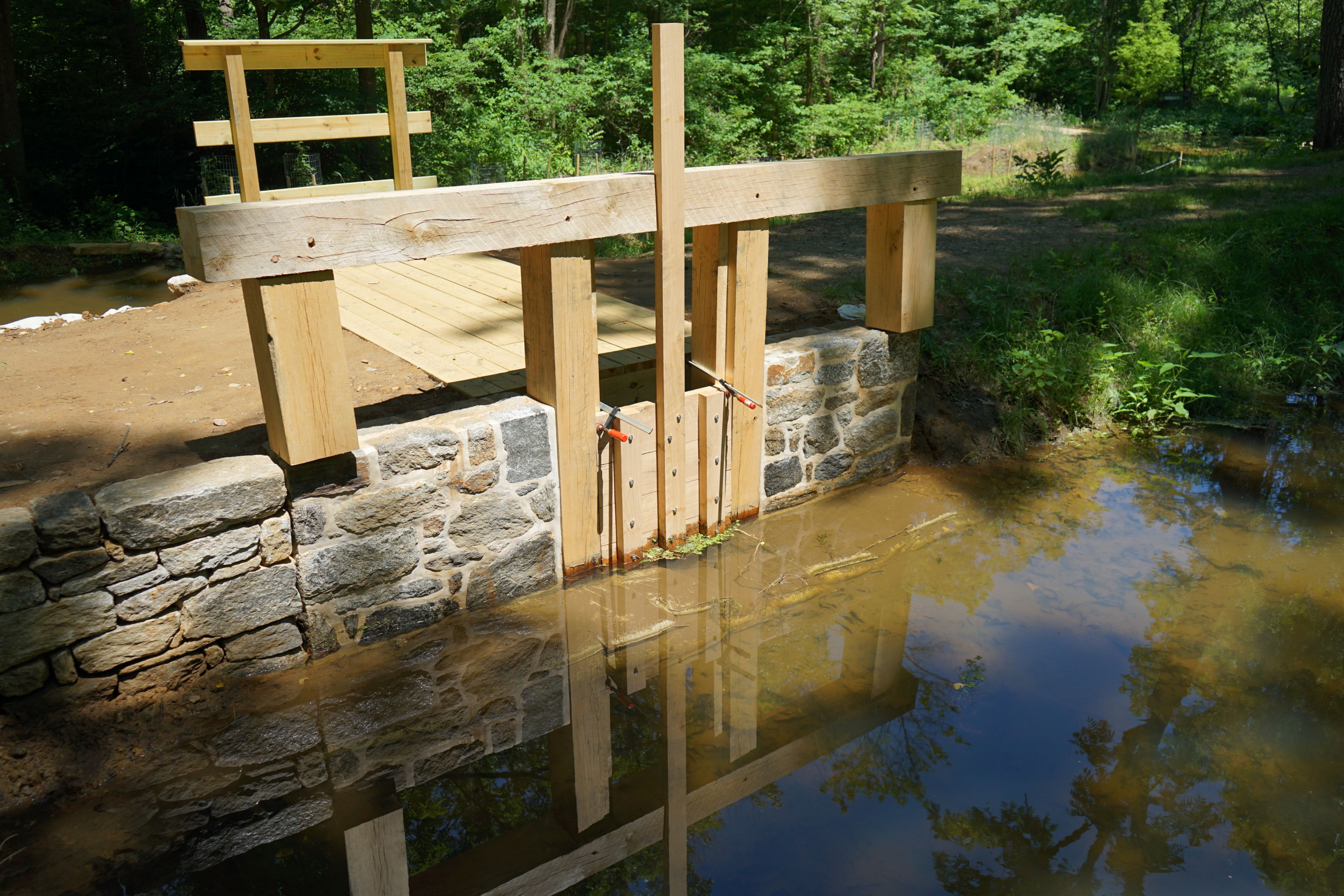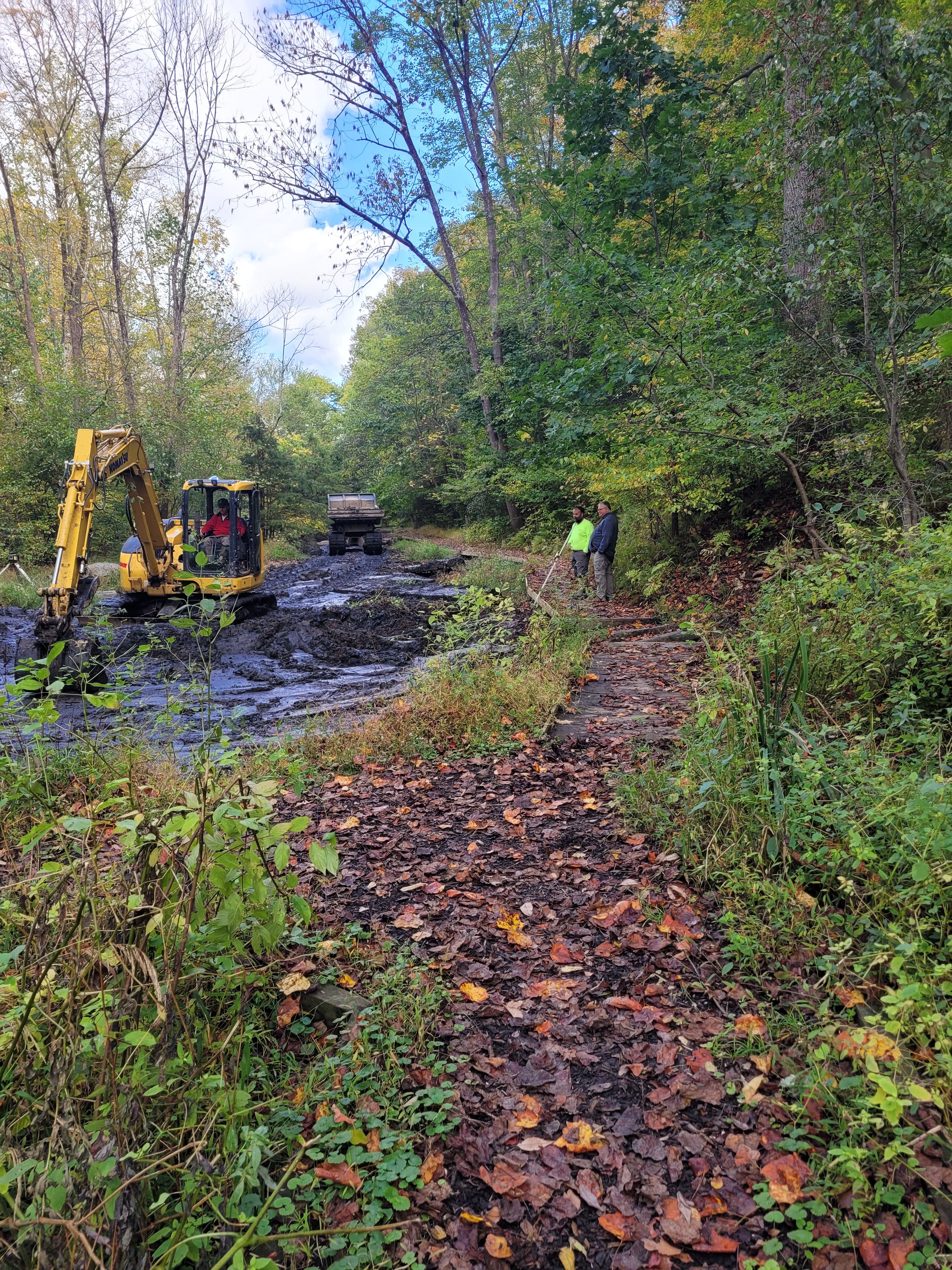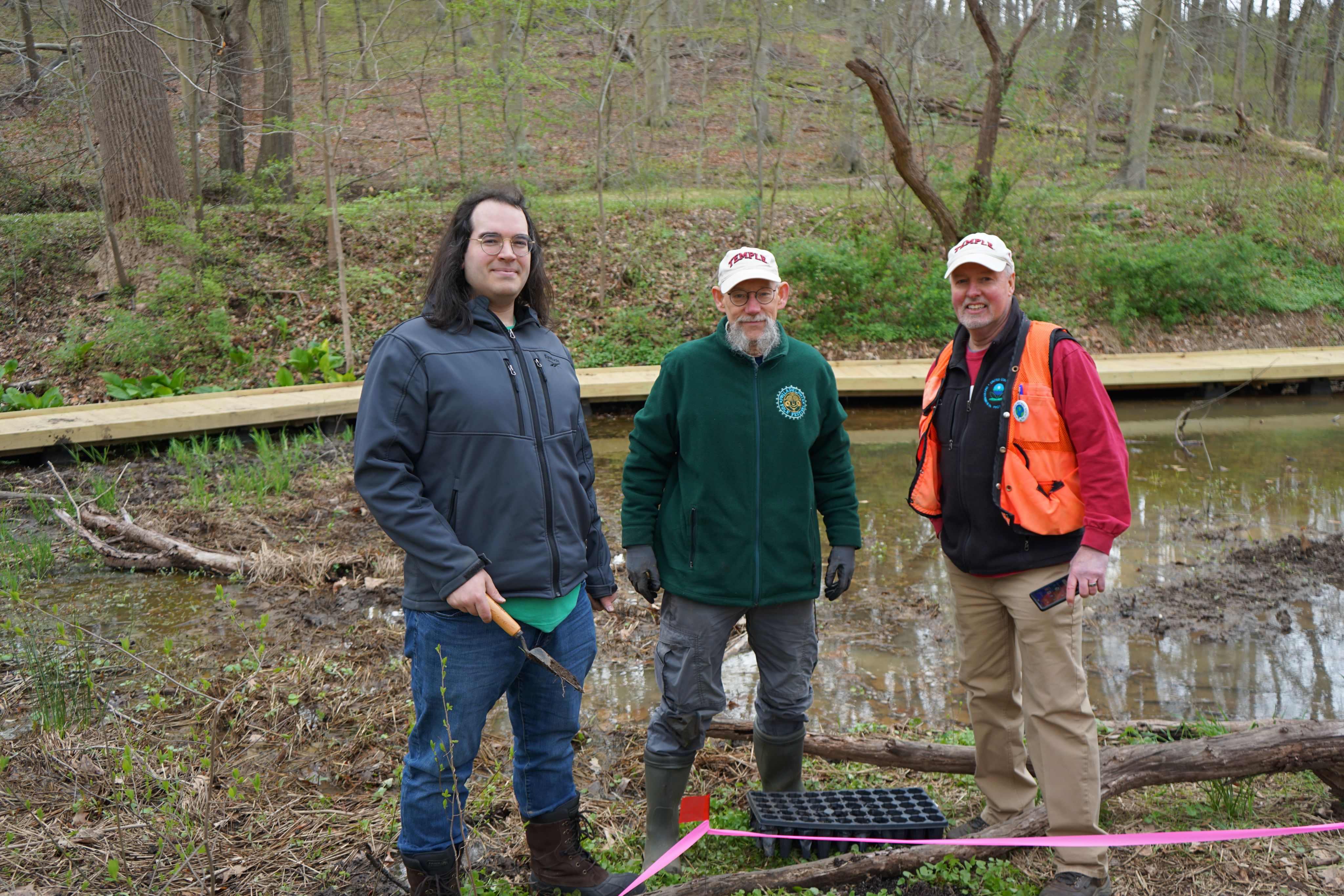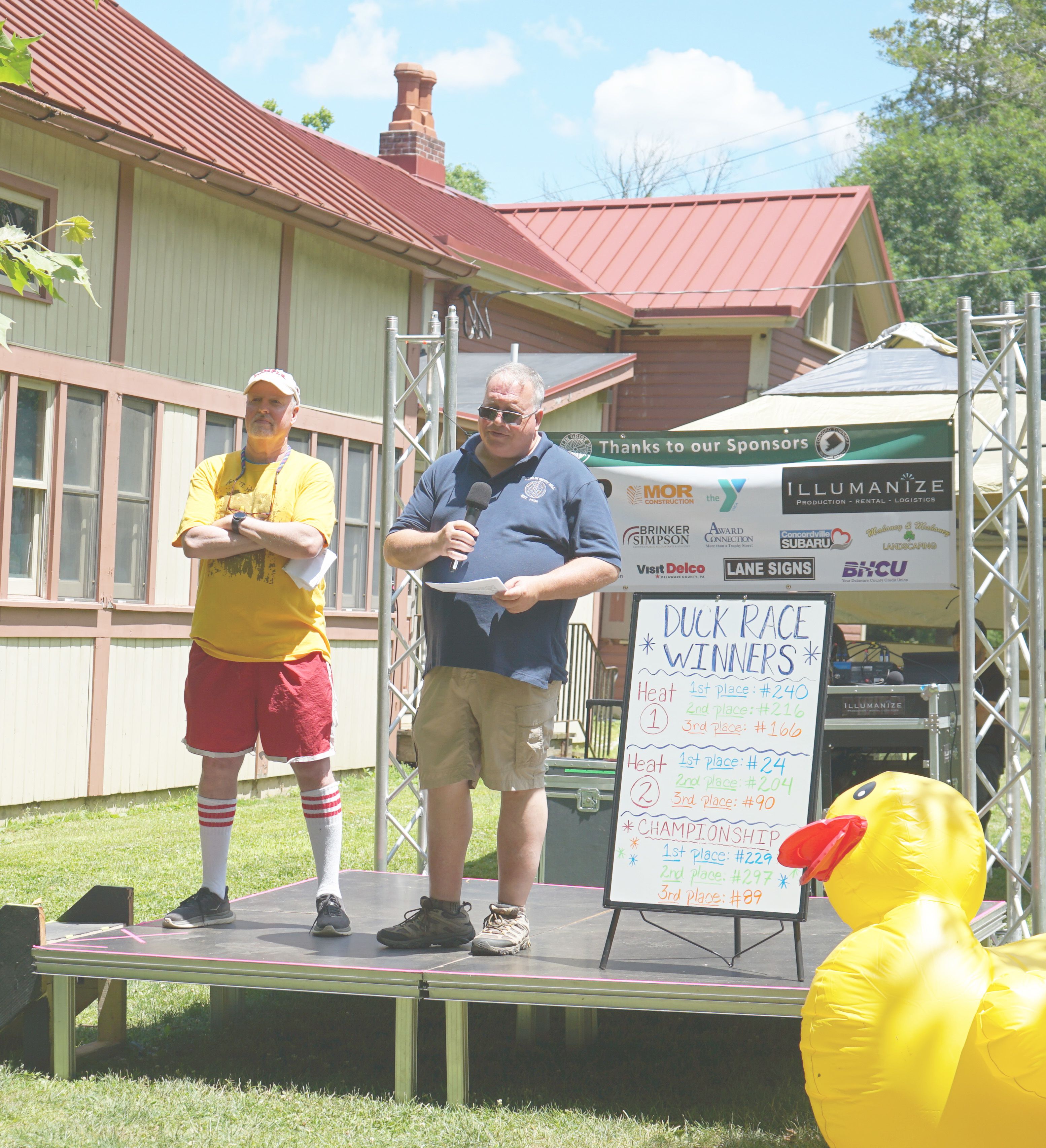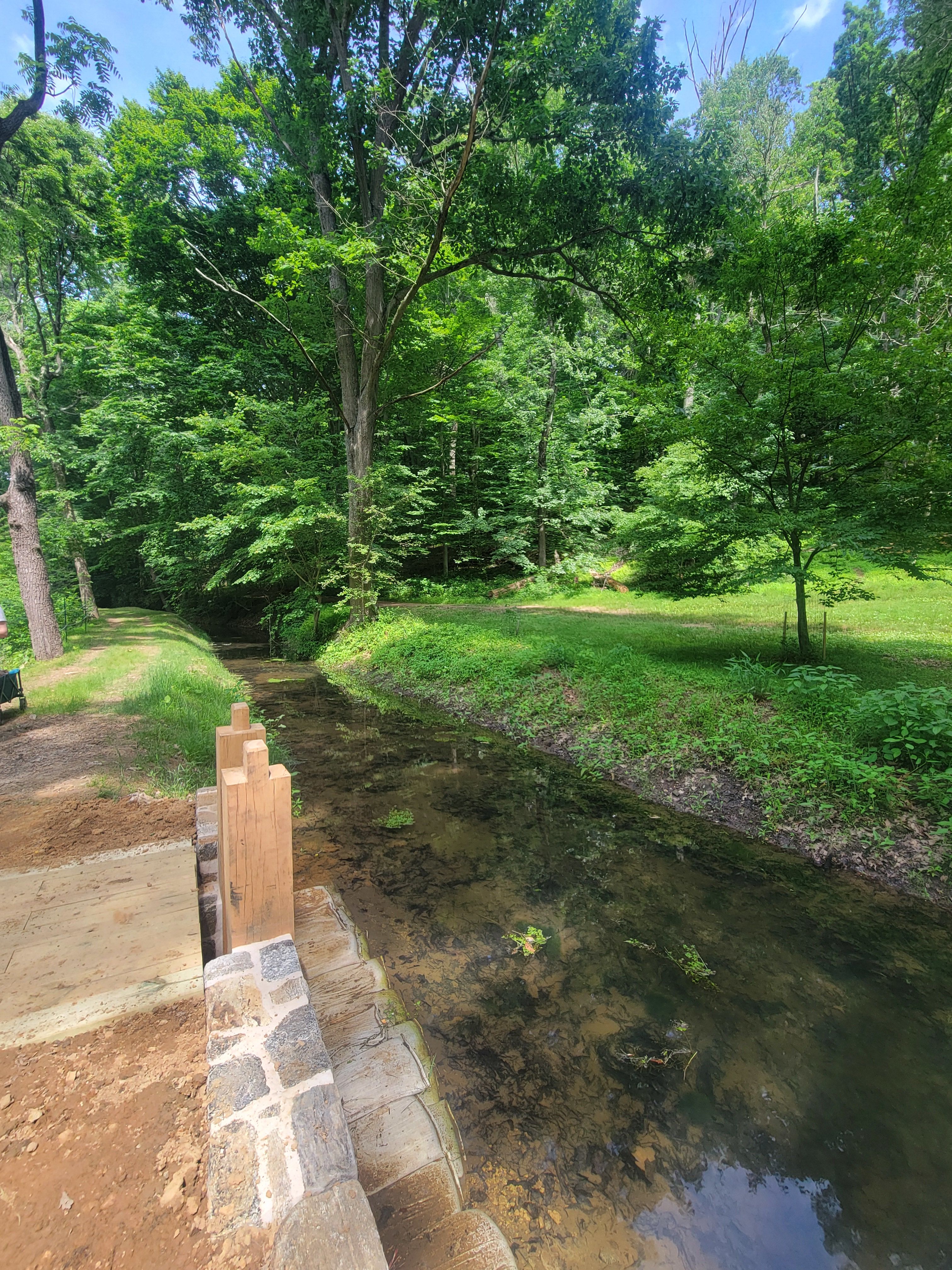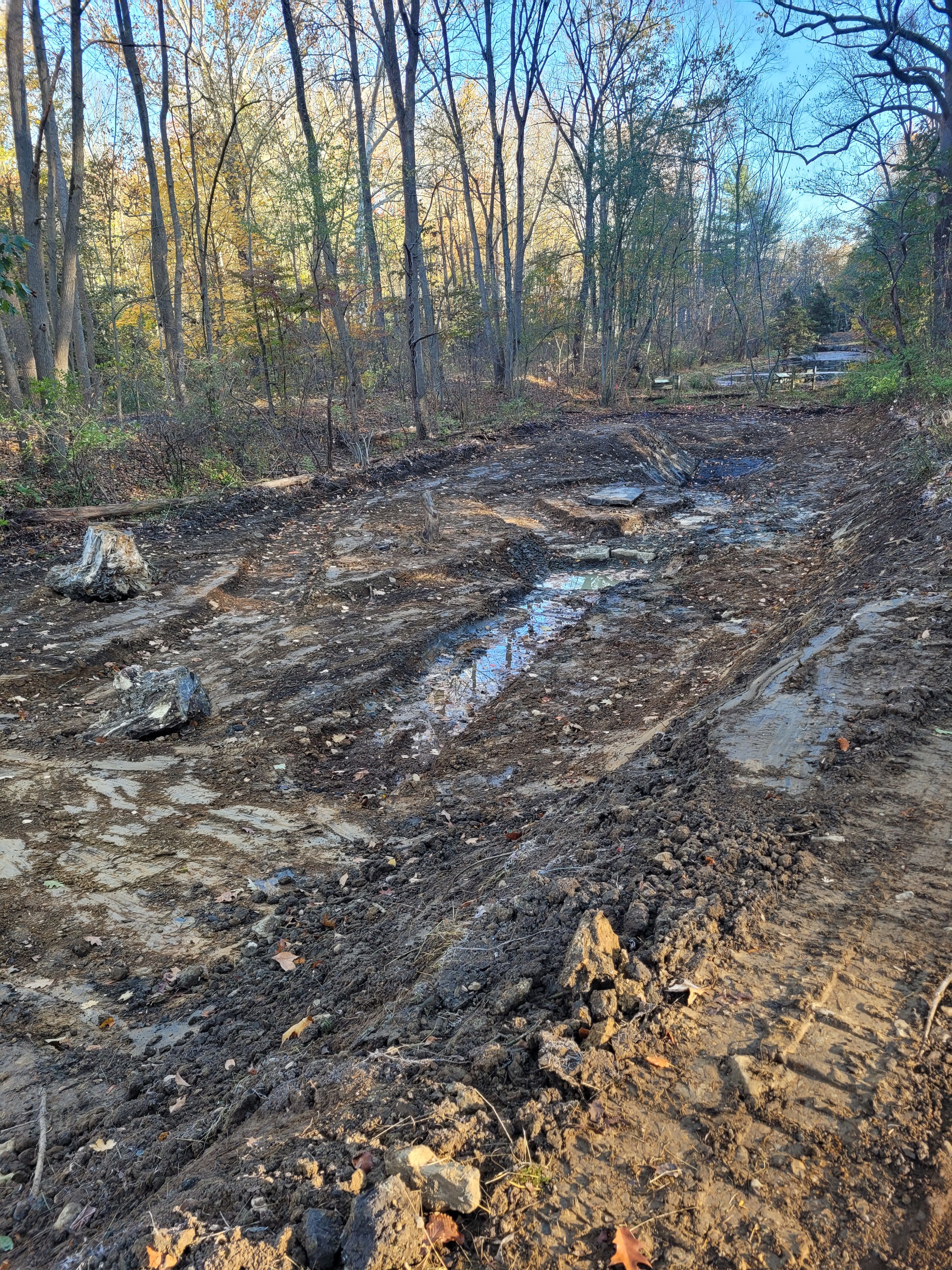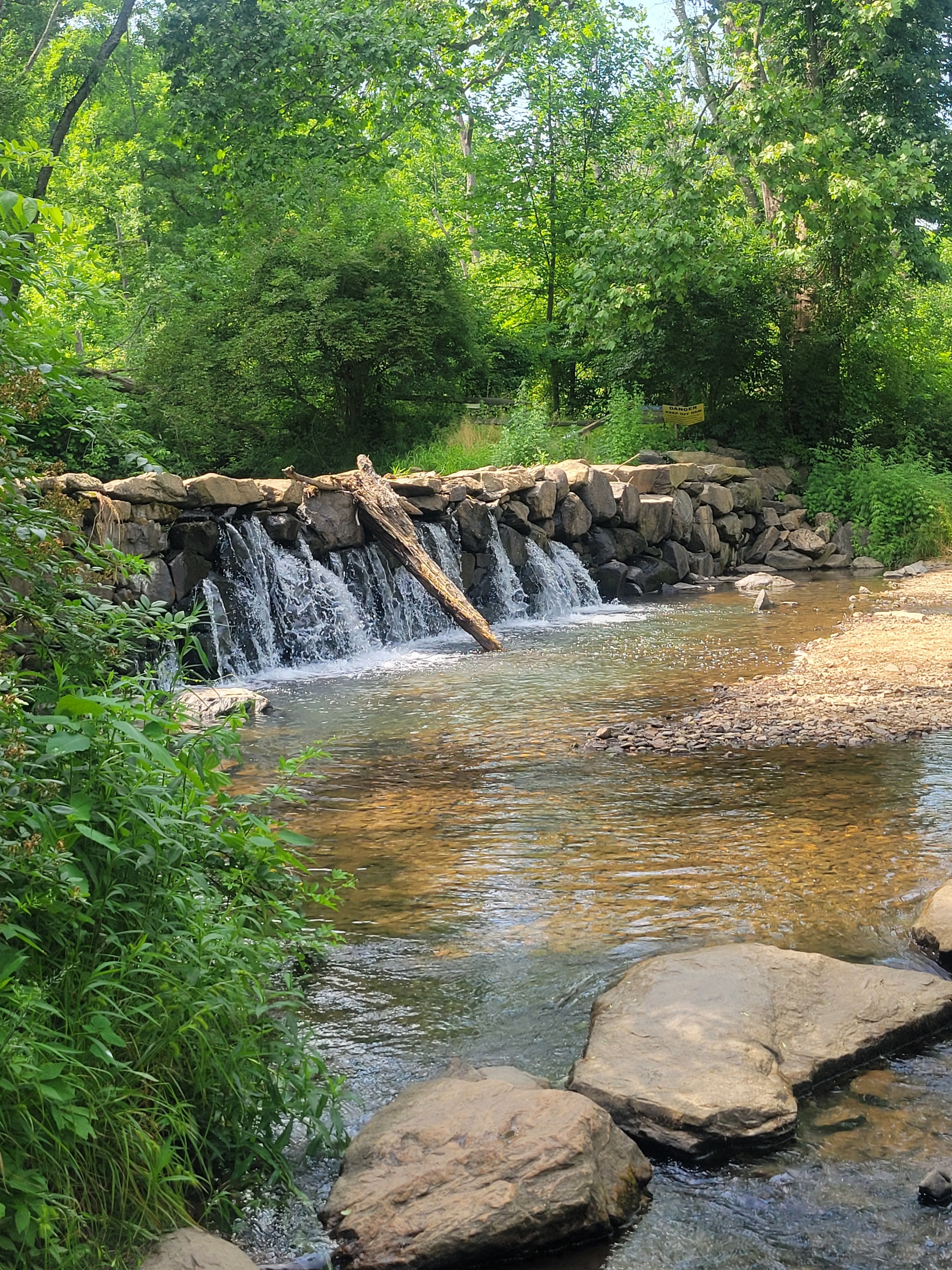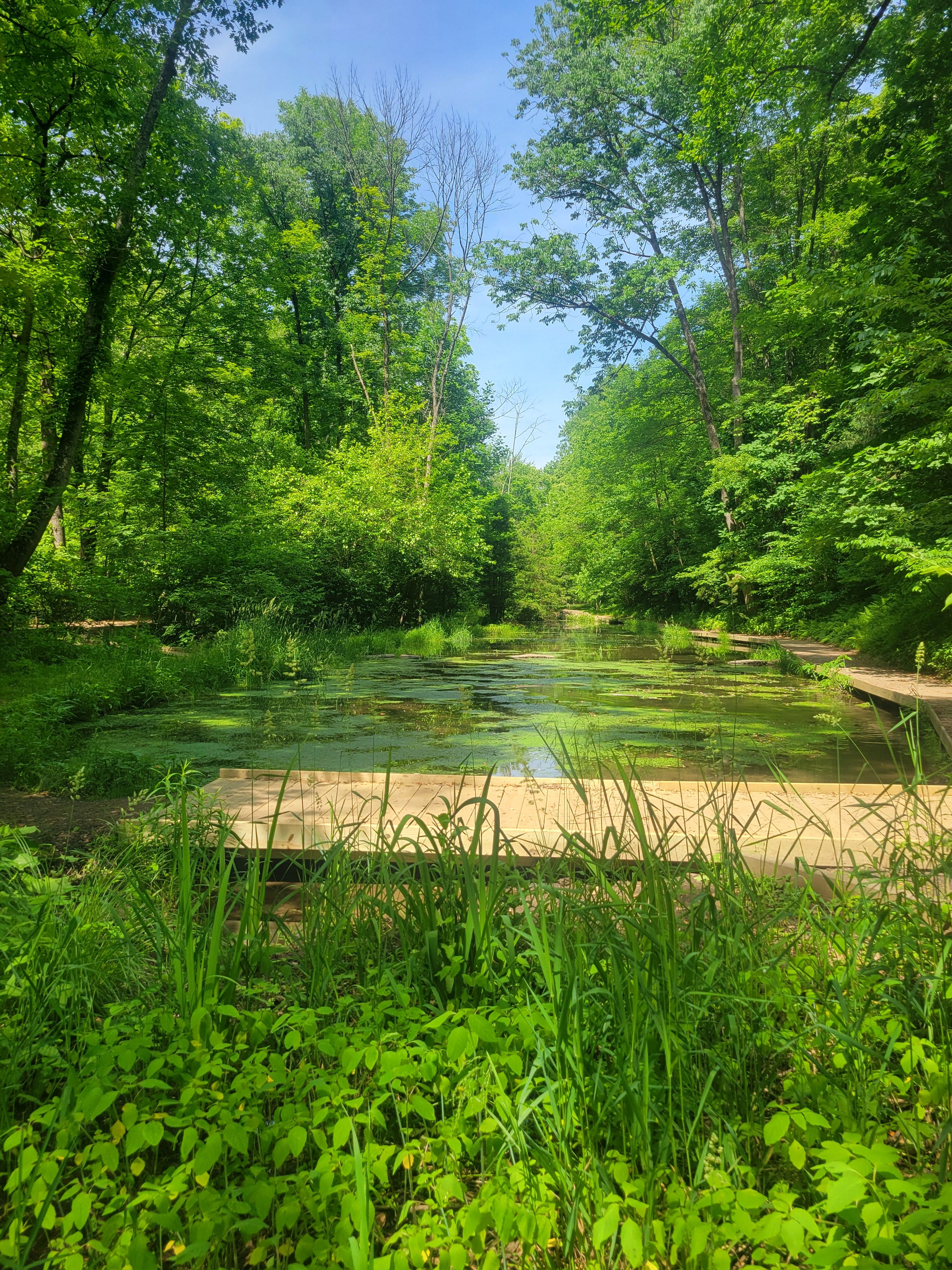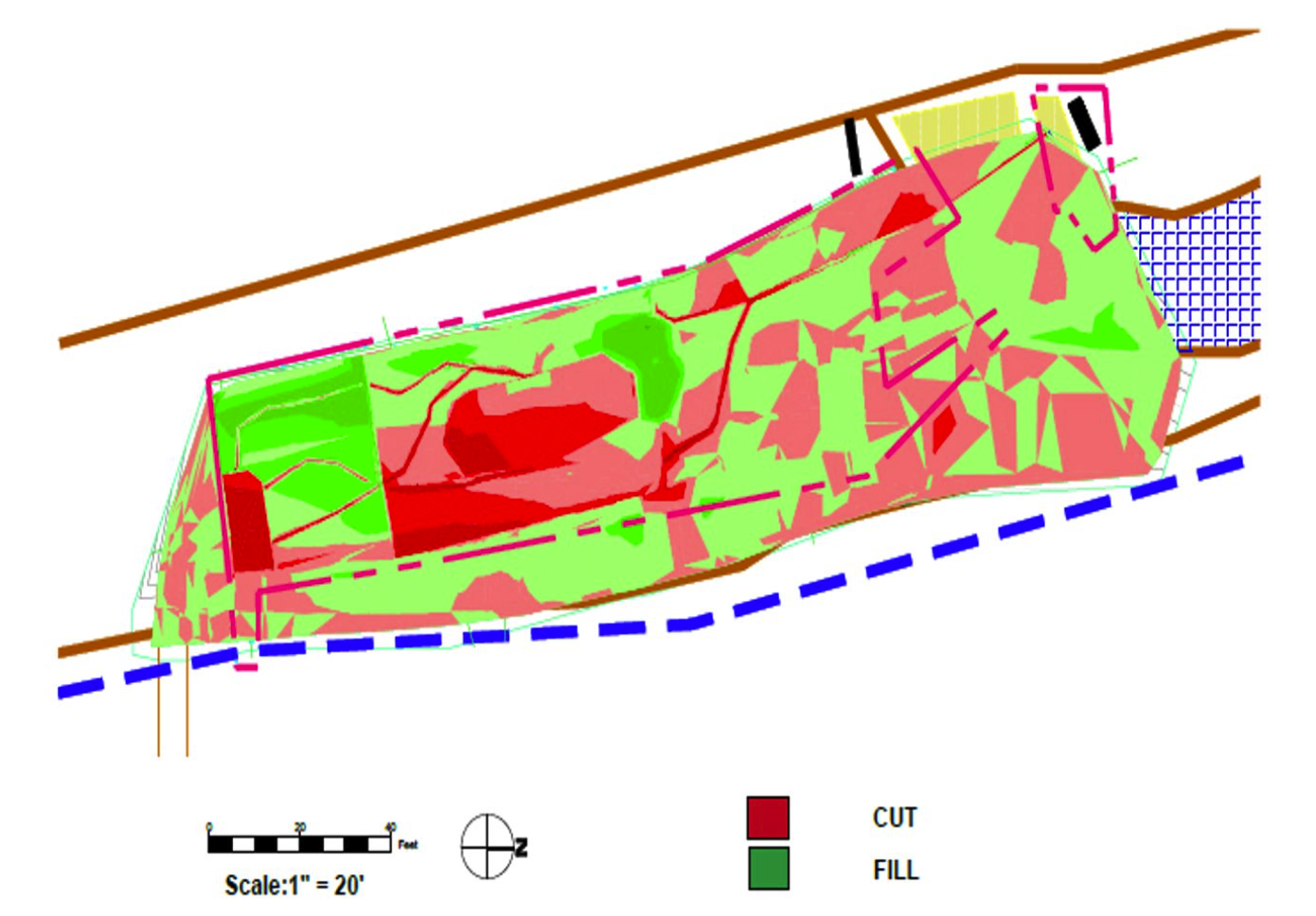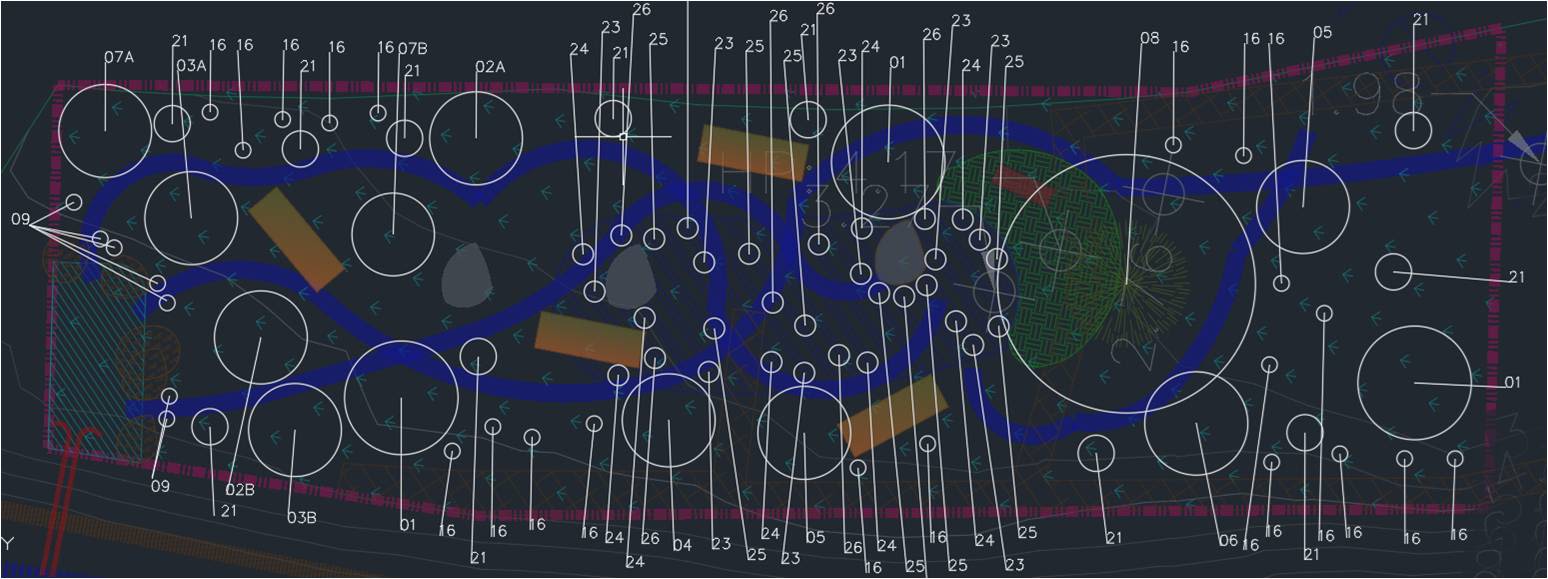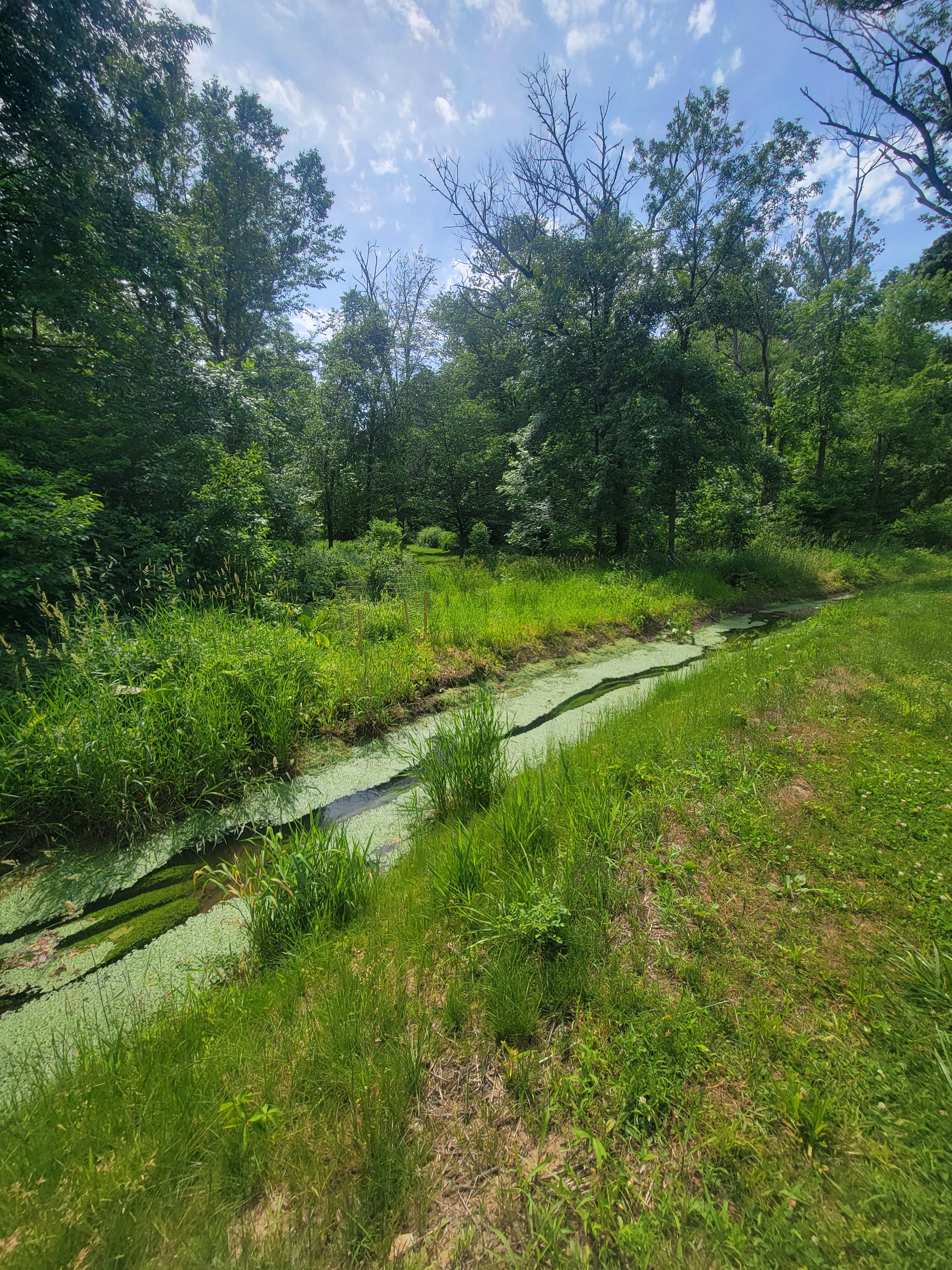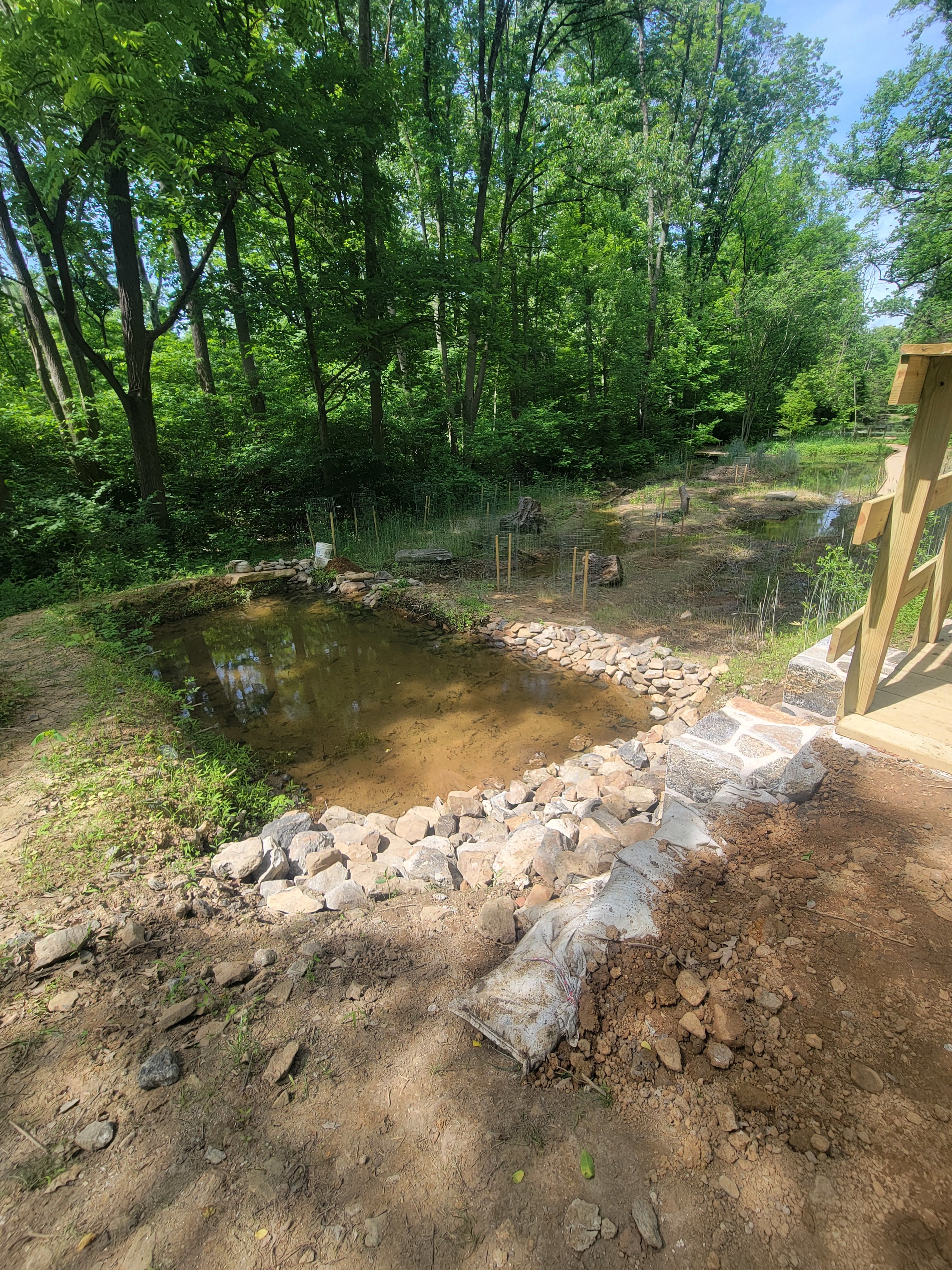Watch the mini-doc below

THE NEWLIN GRIST MILL PROJECT
Temple Engineers expand the wetlands
Protecting and Sustaining
Wetland Biodiversity
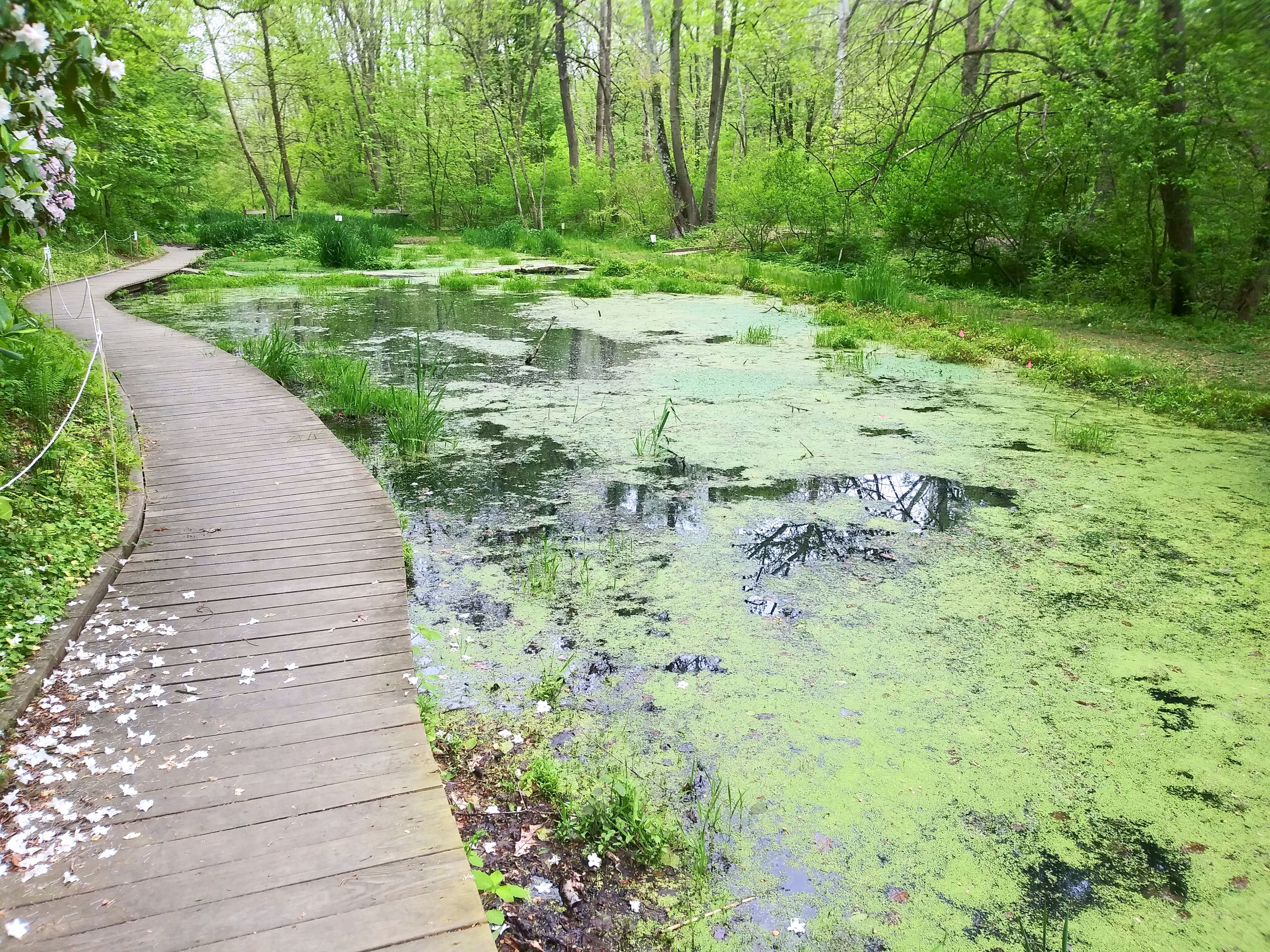
The Beginning
Four years after their graduation, Class of 2020 Temple Engineering students, Jeffrey Pepin, Shaun Spadea, Trent Pepper and Wengang Liu will see their senior design project come to life at the opening of the new Newlin Grist Mill watershed and expanded frog pond event on June 15, 2024.
All students graduating from the College of Engineering at Temple University complete a senior design capstone project. As a culmination of the engineering student’s coursework, the senior design project provides an opportunity to apply concepts learned in class to a real-world problem.
Temple Adjunct Professor and Newlin Grist Mill Board of Trustees member, Kevin Magerr, saw this as the perfect opportunity for a senior design project in the Fall of 2019.
The Newlin Grist Mill, located in Delaware County, boasts a 160-acre park filled with nature trails, wetland areas, and historic sites. Founded in 1704, after being purchased from William Penn, the mill is a certified historical site by the Pennsylvania Historical & Museum Commission. The park provides many environmental, archeological and historical educational program opportunities open to the public.
Prior to 2019, a nearby construction project of the expansion of local highway Route 322 disrupted the mill’s water resources, including the raceway and frog and trout ponds. This resulted in mass amounts of sediment entering the raceway that feeds water from the nearby Chester Creek into the frog and trout ponds, disturbing the wildlife and making the current water resources nearly uninhabitable.
Wetlands are a vital ecosystem providing significant environmental utilities including flood control, water quality enhancements and a wide variety of plant and animal habitats. The students’ wetland project promotes awareness and functionality of this vital water resource throughout the park’s environmental education programs. Sadly, many of our wetlands have disappeared as a byproduct of development. As a result, there are strict regulations when building and expanding wetlands.
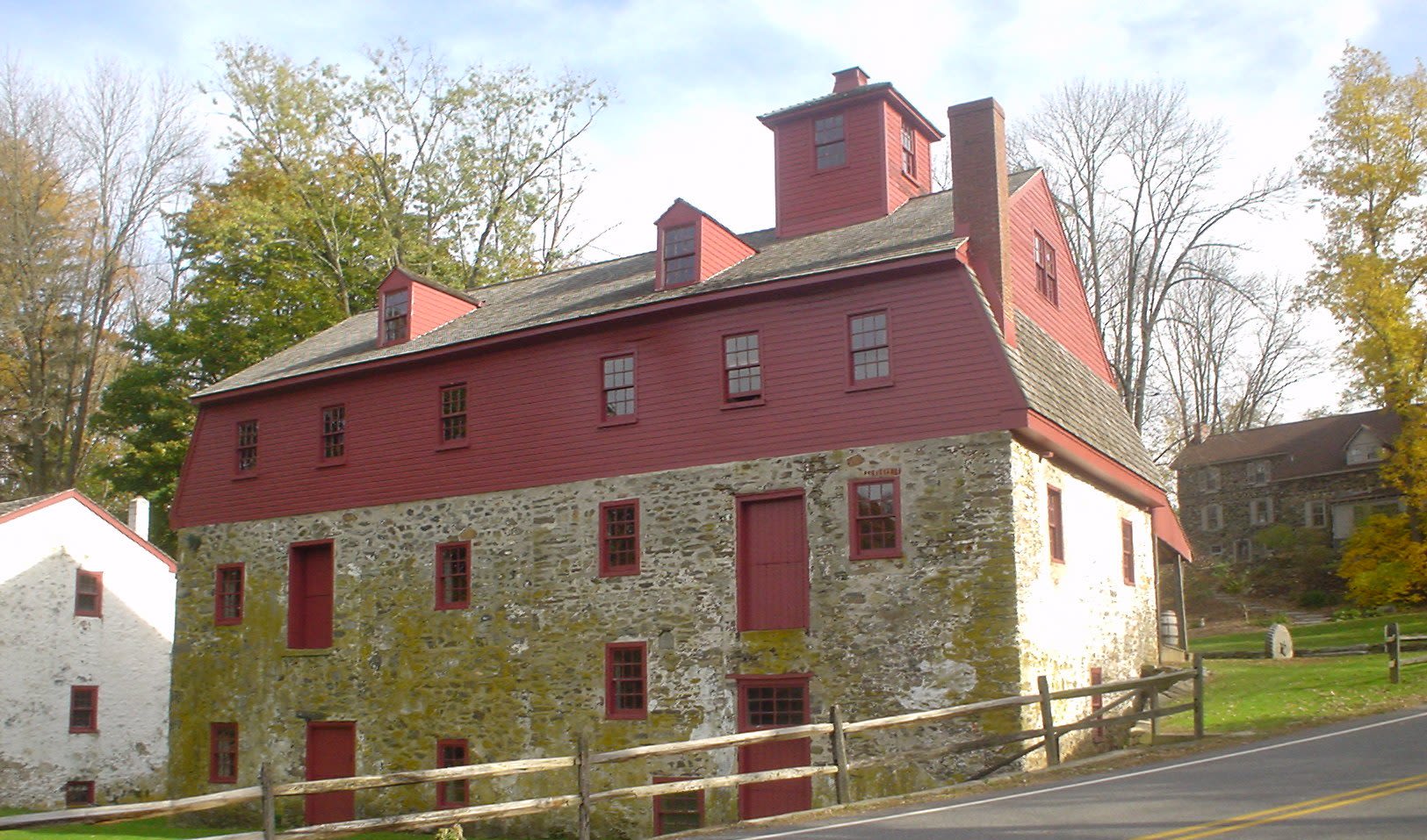
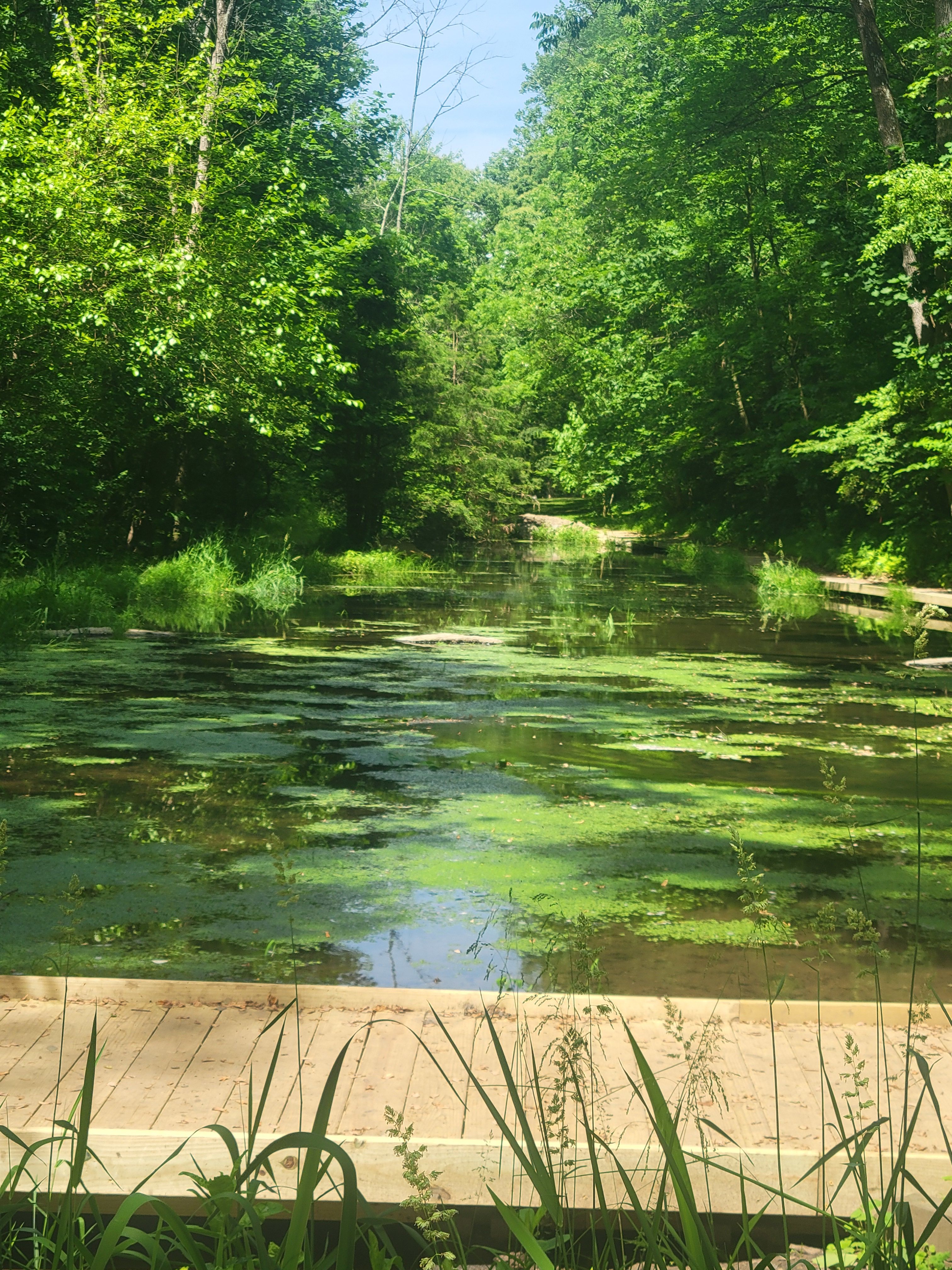
Before (Fall 2019)
After (Spring 2024)
The Project & it's Challenges
Students Jeffrey, Shaun, Trent and Wengang quickly became invested in the future of the wetlands as they began work on their project in the Fall of 2019.
It was determined that the current frog pond needed to be drained and dredged to create an additional wetland area to revive the ecosystem. In the process, they were to use the existing hydrology of Chester Creek and raceway from 1704.
While senior design is meant to challenge students and expose them to real-world obstacles, students in 2020 were hit with an unprecedented challenge in the form of the Covid-19 pandemic. They had to quickly adapt to their new class format and figure out how to finish their senior project with the new restrictions. These hurdles affected their ability to obtain equipment and machines, partner operations and caused delays in surveying.
On top of the pandemic, the solutions students designed for the new frog pond expansion had to be aligned with the historic setting of the land established in 1704, in addition to any environmental regulations and permits required. This forced students to deal with permissions from organizations such as The Pennsylvania State Historic Preservation Office, the Environmental Protection Agency, and U.S. Fish and Wildlife.
The Ecology of Construction
Ecology and historical setting quickly became the center of all project decisions.
To address the concerns of endangered species, the students had to conduct a Phase I bog turtle survey in accordance with the U.S. Fish and Wildlife Service. They faced delays and equipment issues, but persevered and found they were clear of disturbing any turtles.
“There’s the engineering side of things and then there’s the natural environmental side, or the ecology side,” explained Magerr. “So, I think that was a challenge for students because they have a pretty good understanding of the hydrology science, but how does that fit into nature?”
To create an environment for biodiversity to thrive, the wetland was designed with microtopography, including several braided channels of different elevations, providing a multitude of habitats for the various “critters” that will live in the wetland.
The students simultaneously worked with the mill’s naturalist, Jessica Shahan, to determine the types of plants that would be present. A well-thought-out landscaping plan was crucial to ensure that different plants were blooming all year-round and a balanced attraction of wildlife such as birds, insects, etc. was maintained. The team eventually settled on a plan including native plants from 26 different species which will bloom at various times from February to December, each with specific water and sunlight needs built into the design.
The Design
The design was based on the ecosystem of the wildlife and the needs of each plant type. To accommodate these needs, water needed to flow into the wetland in a controlled manner, leading to the design of the inlet structure.
Water flows from Chester Creek into the raceway, a small canal structure, and then into the wetlands. The water flow is then controlled by the inlet.
The result, after historical regulations were considered, was an 18th century hand-adjustable sluice gate inlet structure feeding water from the raceway into the wetland.
The design then included a forebay, a natural filtration system, to prevent future sediment runoff from entering the wetland and disturbing the wildlife.
The Construction
After the designs were finalized and plant maps were structured, it took a few years to gather funds and finalize the necessary permits. Construction resumed in 2023.
To avoid disturbing breeding season of local wildlife, excavation commenced in the winter of 2023.
After excavation was finished and the necessary structures were built, in April 2024, the Newlin Grist Mill hosted volunteers to help plant all the native plants from the students’ design. Water was let into the wetland area in early May, with tadpoles, fish, birds and plants already beginning to thrive in their new environment.
Written by: Casey Tinney
Contributors: Kevin Magerr & Jesse O'Neill
Project members: Jeffrey Pepin, Shaun Spadea, Trent Pepper and Wengang Liu
Former Student: Shaun Spadea, Associate Professor: Dr. Robert J. Ryan & Adjunct Professor: Kevin Magerr helping to plant in the new wetland area
Kevin Magerr and Tony Shahan (Park Director) at the grand opening and "Race for the Watershed" event on June 15th.
The Stroud Water Research Center has developed a worldwide water quality network which can be accessed in real time through their website.
The Future of the Wetlands
Wetlands are crucial to a healthy ecosystem. They provide protection from flooding, filter pollutants, and provide a diverse habitat for multiple species.
As a historical and educational institution, Newlin Grist Mill will also use the expanded wetland as an educational tool for the local youth, which fueled the students.
“It was very rewarding and motivating to work on a project that we knew would benefit the environment and provide an educational resource for the community. We knew that a lot of people were relying on us to put our best foot forward,” said Trent.
The College of Engineering continues to prioritize real-world projects, such as this, in their consideration for senior design projects.
The Mill will continue to champion their mission of conserving plants, animals and waterways, as the proceeds from this event go towards maintaining a water quality monitoring system in the waterways.
The monitoring system used in the waterways at the Mill was designed by the Stroud Water Research Center in Chadds Ford. The monitoring system consists of a data logger/microcontroller and various water quality parameter sensors. Water quality data is collected and stored via cell phone connection to a storage cloud.
Timeline
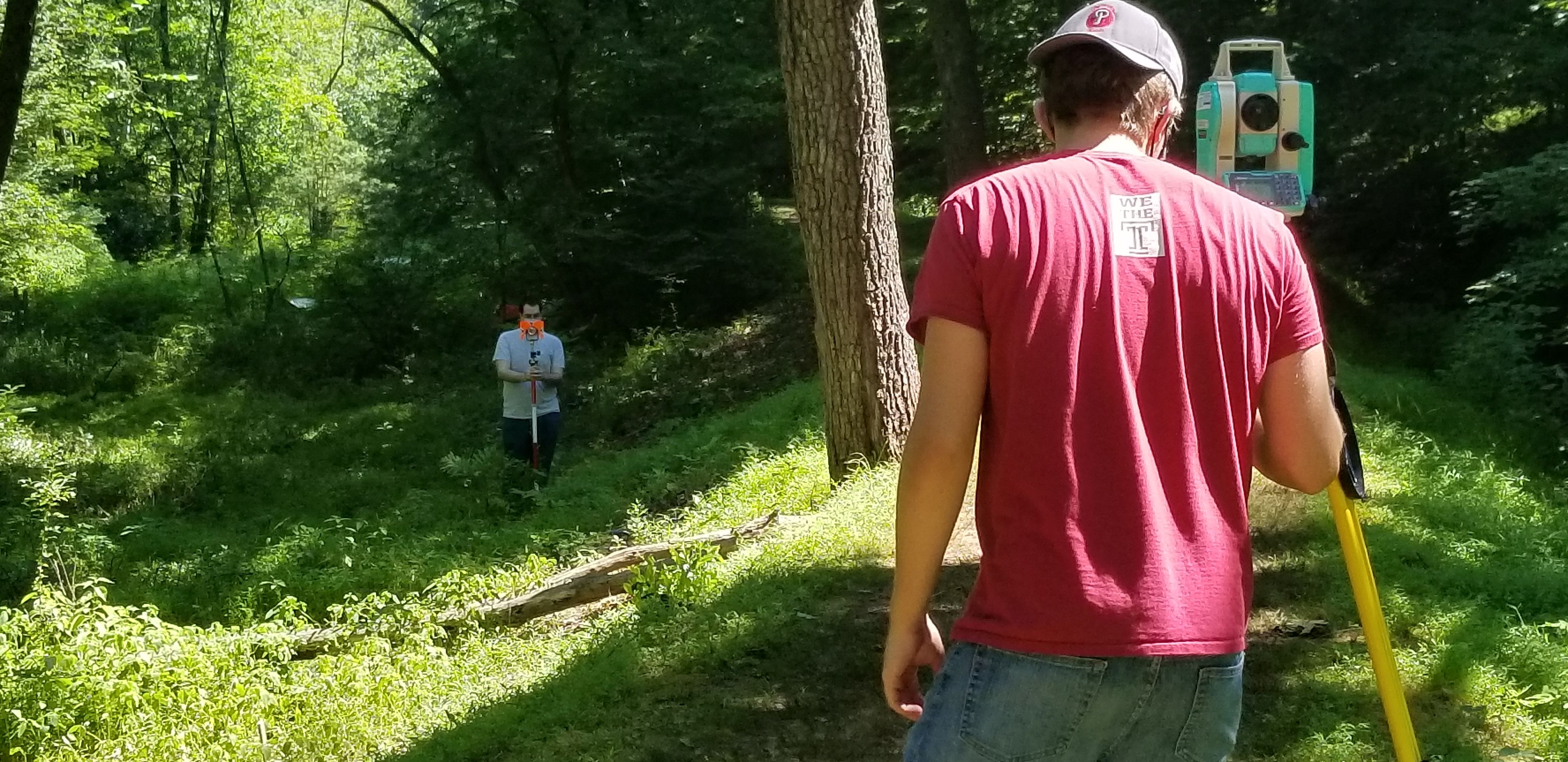
Project Timeline
Initial thoughts about the project
Surveying and Design
Permits and funding acquired
Excavation and construction of the wetlands
Planting and final touches
Water filled in and wetlands officially opened
Common Terms
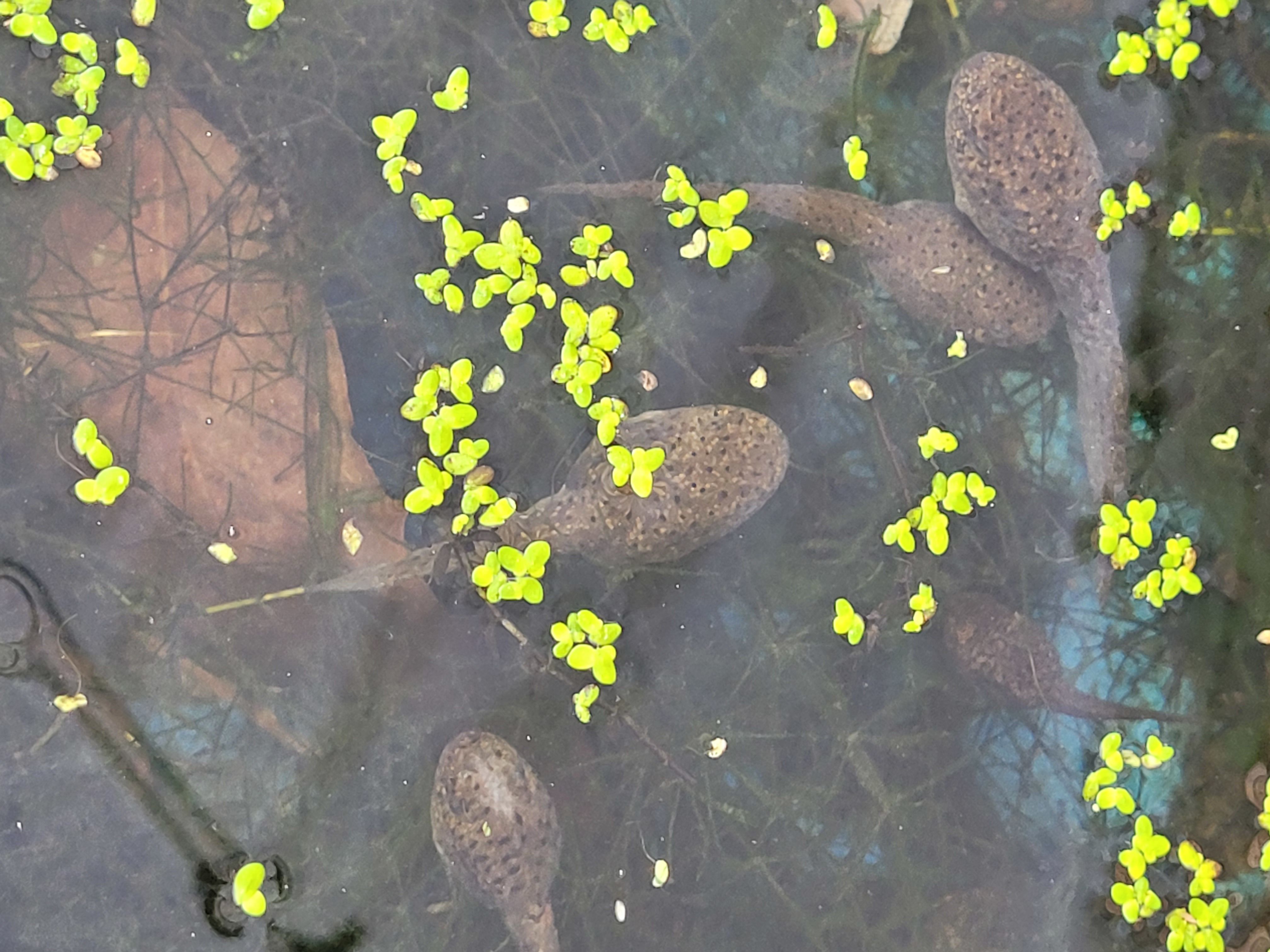
Raceway
A small canal-like structure to promote water flow from one body to the next.
Inlet
The inlet controls the flow into the wetland and allows for safe passage of wildlife throughout.
Forebay
The Forebay’s purpose is to catch any sediment and any other possible pollutants before they enter the wetland.
Microtypography
The series of braided channels, peaks and valleys built into planning that allows for the creation of a diverse ecosystem.
Biodiversity
The variety of wildlife - plants, animals, insects. the plants chosen should ensure that the wetland attracts pollinators, butterflies, reptiles, birds, and fish species in the wetland.
Hydrology
The study of movement, distribution and management of water in relation to flow and environment.

Scroll to see each section of the blueprint.
The existing frog pond
This is the area that is already part of the park. The senior design project was based on the expansion of this area.
New Excavation Area
The new wetlands.
Pre-Construction (Fall 2019)
Post Construction (Spring 2024)
Cut and fill points
Areas marked for the excavation team. These areas provide biodiversity at different water levels throughout the wetland.
Plant additions of several species
These are important to promote biodiversity throughout the wetland.
Many of these plants were chosen for two reasons:
1. They function as good habitats to attract native species like pollinators.
2. They have good aesthetics with colorful blooms year-round.
This includes woody plants (viburnums, button bush, bald cypress, etc.), herbaceous plants (asters, cardinal flower, marsh rattlesnake master, etc.), and emergent plants (duck potato, skunk cabbage, arrow arum, etc.) that are native to southeastern PA. These plants are being placed based on sunlight requirements, color, bloom time, height, and spread.
Plant Map
Approximate Location of the Chester Creek
The Creek provides water supply to the raceway which flows through the inlet structure into the forebay, and then into the wetlands.
The Raceway
Originally hand-dug in 1704, this small canal provides a water way from the Chester Creek into the wetlands.
Inlet
The structure created to manage water flow from the raceway into the wetlands. It can be adjusted by hand and is built to ensure wildlife does not become trapped in the mechanisms.
Forebay
A structure created to prevent sediment runoff from entering the wetland and disturbing the wildlife.
The Forebay’s purpose is to catch any sediment and any other possible pollutants before they enter the wetland. The bottom of the forebay should be significantly below the outflow to minimize the re-suspension of the pollutants from heavy water inflows such as storms.

